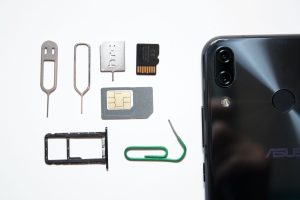
We’ve been using mobile phones out of our home networks for years, thanks to national and international roaming. Roaming services have been here since the cellular radio’s second generation, followed by GSM’s introduction in 1991. Though using such services requires subscribers to spend some extra.
However, work needs to be done for IoT devices. Organizations have been using cellular connectivity to manage logistics and asset tracking for years. But the real challenge lies in managing connectivity across regions and countries, particularly for small businesses.
In recent years, specific IoT services were introduced following the 4G LTE network release. On cellular networks, Long-Term Evolution for Machines (LTE-M) and Narrow-Band IoT (NB-IoT) provide new wide-area, low-power connectivity. These make it possible to deploy massive IoT applications. LTE-M gained a lot of popularity in the United States over time, while NB-IoT became a preferred standard in Asia and Europe. Additionally, new radio specifications include both NB-IoT and LTE-M, indicating a clear path to 5G.
OTA updates are also supported by LTE-M. It makes it simpler to transmit SIM profiles and necessary updates when combined with higher bandwidths. This is especially helpful in situations where mobile or deployed devices are involved. And, it is not cost-effective to send a technician out into the field to carry out the necessary updates.
It is important to note that 4G and 5G modems are significantly more expensive than 2G and 3G modems, requiring IoT manufacturers to invest more money. However, since many operators are discontinuing their 2G and 3G networks, it is now necessary to upgrade existing equipment.
NB-IoT and LTE-M are the preferred options for the majority of massive IoT applications that require cellular network security, availability, and low power consumption. However, changing SIM cards in thousands of devices deployed across regions without accessing each one presents a challenge. And, embedded SIM (eSIM) comes into play here.

Embedded SIMs can be as small as a pinhead and are integrated into a device’s main board. eSIMs can be used in smartphones, routers, M2M platforms, wearables, tablets, sensors, and other mobile devices. This provides the supply chain with carrier flexibility. It does not, however, have any initial credentials for a specific carrier. Instead, an iSIM (integrated SIM) has just been created by integrating a baseband processor and cellular modem with the embedded SIM’s circuitry.
According to Juniper Research, iSIM is the next stage of connectivity after eSIM, particularly for IoT applications and connected devices. Manufacturers can produce smaller connected devices by completely removing the embedded SIM. And this results in a significantly wider scope of connectivity.
eSIM technology solves several major problems by removing the need for a physical SIM. It significantly reduces the footprint of the circuit board, power requirements, the complexity of the circuit, and the cost of manufacturing. While all these contribute to higher processing capacities, it leads to streamlined supply chains.
Over-the-air (OTA) credential onboarding is a significant benefit of embedded SIMs. The eSIM can be integrated into the motherboard of IoT devices. Moreover, user certificates can be securely distributed by cellular carriers without the need for human interaction.
“By 2027, the global eSIM market will be worth $16.3 billion, up from $4.7 billion in 2023. The adoption of eSIM-enabled consumer devices will drive the market by an impressive 249% growth, according to Juniper Research. Apple’s recent release of the eSIM-only iPhone 14 also triggered accelerated operator support.

The application of the SIM module as a security device is one of the most significant advantages of cellular connectivity for IoT. This makes it possible to secure and certify IoT devices with eSIM. The Subscriber Identity Module (SIM) has provided tamper-resistant security for credentials to access the cellular network ever since it was introduced on GSM networks. In addition, it contains the keys for application encryption and device security.
The eSIM is identical. At a GSMA-certified manufacturing facility, the initial root of trust is pre-programmed, and the primary security key is equipped with operator credentials. Utilizing the SIM as a robust, scalable, and standardized hardware security to safeguard IoT data communications by IoT service providers and device manufacturers is made possible by the GSMA IoT SAFE (IoT SIM Applet for Secure End-2-End Communication). Even though this safeguards connected devices to great extent, it only applies to cellular networks.
The eSIM root-of-trust is now being used by a lot of OEMs to safely identify and track embedded connected devices. The eSIM is ideal for identifying counterfeit goods and tracking their global locations because it provides the same level of security and cannot be removed.
After the GSMA finally published the eSIM specifications five years ago, Arm decided to form a specialized group to investigate the IoT application potential of eSIM. In 2020, it spun off into Kigen, a brand-new subsidiary of Arm.
The provisioning services are not offered by device manufacturers because they lack secure servers and applications. A smart meter made in China for a German utility company, for instance, needs to have a German carrier profile added to it. That’s when businesses like Kigen step in.
While speaking at the recent IoT Solutions World Congress, Kigen’s strategy and innovation director, Paul Bradley said, “[eSIM] has everything to do with chip-to-cloud security or inter-device security. And what I mean by that is today, you have the same root of trust for storing the credentials for authenticating to the mobile network. Tomorrow, even in deployments that we see already, you can use the same security, not just to store the network authentication credentials but also the credentials to communicate with the cloud where the application resides.”
Last year, Vincent Korstanje, CEO of Kigen spoke to IoT Times, stating, “The critical thing about the e-SIM is its excellent security standards, but now it’s much more viable and more deployable for mass IoT deployment. You don’t want to send a technician around and change all the SIMs. You can do this electronically from a distance.”
IoT roaming refers to a sensor or device connected to a network outside its home network.
As per Juniper Research’s last year report, roaming IoT devices across the world will rise to 1.8 million from 300 million from 2022 to 2027, a 500% growth. And, the study also referred to UK-based Vodafone Business as the top-ranked service provider in this area.
According to the report, “Network operators are increasingly shifting their focus towards the enterprise market, primarily due to the growth of roaming IoT connections. At present, operators cannot monetize enterprise-led M2M and IoT traffic on their network if they do not have a direct relationship with enterprise customers. As enterprise adoption of private 5G networks accelerates, operators risk losing a lucrative revenue opportunity. In response, operators can establish direct roaming agreements with the enterprise customers responsible for traffic passing between private and public networks. Once a direct relationship with an enterprise customer is established, there will also be ample opportunities for cross-selling and up-selling of related technologies and services.”
